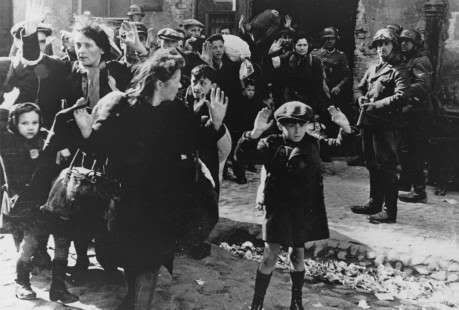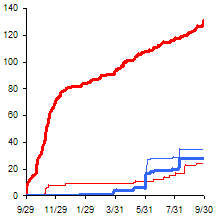From the NYT
RIVERHEAD, N.Y. — When Suffolk County prosecutors charged seven teenagers in the deadly assault on Marcelo Lucero, an Ecuadorean immigrant, in Patchogue, on Long Island, last November, one of the more disturbing accusations was that they engaged in a regular and violent pastime: hunting for Hispanics to attack.
On Wednesday, the prosecutors painted a newly detailed picture of what they said was a yearlong rampage by some of the teenagers, announcing new indictments that accuse the seven defendants in the fatal attack of assaulting or attempting to assault a total of eight other Latino men.
Prosecutors believe that many more teenagers — they are not sure how many — were involved in attacks on Hispanics in and around Patchogue, and are still at large. Investigators believe that there is a separate group of teenagers who roam Patchogue on bicycles attacking Latinos, according to a law enforcement official, who spoke on the condition of anonymity because the investigation is continuing.
“There is a lot of work still to be done,” District Attorney Thomas J. Spota said, “to ensure the safety of all the people who choose to call Suffolk County home.”
Five of the defendants — Christopher Overton, Anthony Hartford, Jose Pacheco, Jordan Dasch and Nicholas Hausch — pleaded not guilty in Suffolk County Criminal Court. The other two, Kevin Shea and Jeffrey Conroy, are expected to plead not guilty at arraignments next week. Not all of the defendants are charged in each case.
Jose Perez, a lawyer for LatinoJustice P.R.L.D.E.F., an advocacy group, said the new cases were “the tip of the iceberg” in a pattern of violence against Hispanics, and show that a more aggressive police response to earlier attacks could have prevented Mr. Lucero’s death.
After Mr. Lucero died, many other immigrants came forward to describe attacks. Some had never been reported; others were reported to police at the time, but no one was arrested, in part because language barriers made communication difficult, Mr. Spota said.
Investigators who were searching for new suspects showed more than 20 victims photographs of more than 20 of the defendants’ friends and acquaintances, but none were identified as assailants by any of the victims, the law enforcement official said.
In one of the new indictments, Mr. Pacheco and Mr. Conroy, who is accused of fatally stabbing Mr. Lucero on Nov. 8, were charged with beating Carlos Orellana on July 14, 2008.
Mr. Orellana was one of 11 Latino men who gave detailed accounts of 13 similar attacks to The New York Times for an article published this month. The cases reported in the article are now under investigation, a law enforcement official said.
On June 24, 2008, prosecutors said, a group of teenagers attacked Robert Zumba, kicked him and restrained his arms while Mr. Conroy lunged at him with a knife, cutting him.
Another man, Jose Hernandez, was attacked three times in a week in December 2007 by members of the group, prosecutors said. In one incident, they said, Mr. Conroy held a pipe in one hand and smacked it against his other palm, saying “We’re going to kill you.”
Lawyers for the defendants questioned how the victims could have identified their clients after so long, and suggested that prosecutors were pinning every possible assault on them.
Mr. Spota said prosecutors had considered the possibility that victims only thought they recognized the defendants because they had seen them in media coverage, and were careful to seek corroborating evidence.
The law enforcement official said that photo lineups were used to identify the suspects. In one case, Mr. Hartford, Mr. Hausch and Mr. Dasch are charged with attacking a man prosecutors identified as Petronila Fuentes Diaz on the night that Mr. Lucero was killed. A baseball cap that Mr. Diaz reported missing was found in Mr. Dasch’s car, the official said.
One of the challenges, the official said, was getting teenagers who may have known of the regular attacks to come forward. A few cooperated “reluctantly” with the investigation, recounting how some of the defendants bragged of certain attacks, the official said, but “they were resentful that their friends had been caught.”


